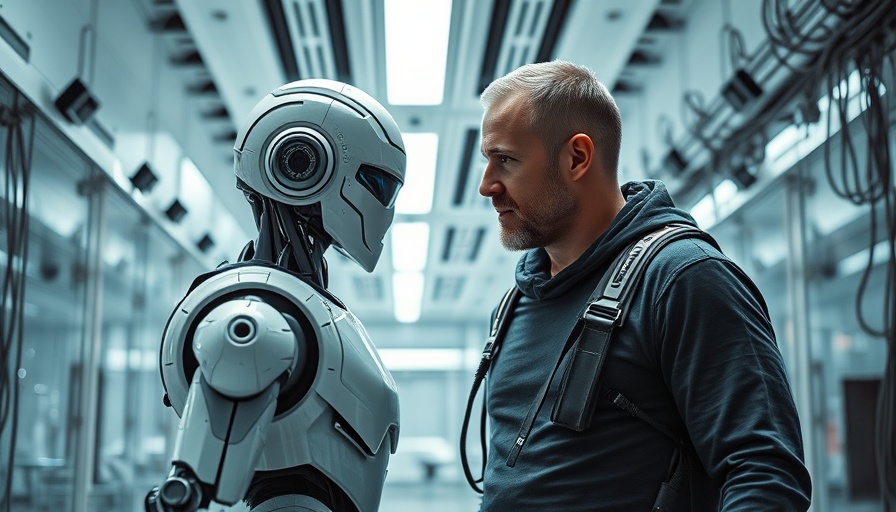
How Google's Cloud Next Revolutionizes AI Interaction
This week, the buzz surrounding Google's annual Cloud Next conference resonated across various sectors, with a clear emphasis on artificial intelligence (AI) and its evolving utility. As organizations grapple with integrating AI into their operations, they can take cues from Google’s recent innovations—especially the focus on agents and agentic infrastructure.
In 'Google Cloud Next is All About Agents [Shocker!]', the discussion dives into the relevance of AI agents in modern business, exploring key insights that sparked deeper analysis on our end.
Understanding Agentic Infrastructure
The term "agentic infrastructure" broadly refers to systems that allow various AI agents to work together seamlessly. Central to this discussion is the introduction of two significant standards: Model Context Protocol (MCP) and Agent-to-Agent (A2A) communication. These frameworks not only aim to improve interoperability between AI systems but also aim to simplify interactions, reducing complexity for businesses adopting these technologies.
As Google’s VP of Cloud Business Application Platform mentioned, A2A is designed to improve communication layers among agents, distinguishing itself from MCP, which focuses more on tool usage. This distinction is essential for businesses seeking to implement AI systems tailored to their unique operational needs. By embracing such standards, companies can ensure their agents communicate across different platforms without problems, allowing for more collaborative AI solutions.
The Rise of Multi-Agent Systems
Multi-agent systems have become increasingly prevalent, promising to enhance organizational efficiency by empowering AI agents to undertake repetitive tasks independently. With Google’s recent announcements, we see key players, including Salesforce and Workday, coming together to support A2A. This collaboration signifies a strong industry push towards improving the effectiveness and usability of AI.
Potential Challenges and Opportunities
While the promise of these new standards is enticing, there are certainly challenges in ensuring widespread adoption. Tech leaders like HubSpot founder Dharm Sha caution that heavier protocols may face slow uptake compared to lighter, more agile options. Businesses looking to integrate these technologies should weigh the pros and cons while considering their internal capabilities and readiness for change.
Security Innovations: A Key Focus
In addition to interoperability, security remains a major concern as organizations adopt more AI-driven solutions. Google’s introduction of a security agent as part of their unified platform highlights the shift towards proactive security measures. As mentioned by Charles Schwab's Chief Information Security Officer, this transformation can empower teams to focus on strategic initiatives, making AI not just a tool but a vital partner in security operations.
What’s Next for Google and AI?
With the unveiling of its seventh-generation Tensor Processing Unit, Ironwood, Google aims to enhance its computing power specifically tailored for AI applications, significantly influencing the future landscape of AI. This specialized approach offers the potential to outperform traditional GPU architectures, emphasizing a trend towards highly optimized hardware for AI tasks.
As businesses navigate the technologies introduced at Google Cloud Next, the implication is clear: organizations keen to leverage AI must stay agile and informed about the evolving ecosystem, adapting to changes in agent-based architectures that promise to streamline operations and enhance efficacy.
Conclusion: Start Using AI Now
For business owners, the evolving standards and technologies in AI represent an exceptional opportunity to drive efficiency and innovation. As Google aims to bridge and enhance AI communication, the benefits stand to transform industries. To truly capitalize on these advancements, now is the time to integrate AI into your business operations. START USING AI NOW to take the first steps towards automating processes and improving your organizational capabilities.
 Add Row
Add Row  Add
Add 




Write A Comment